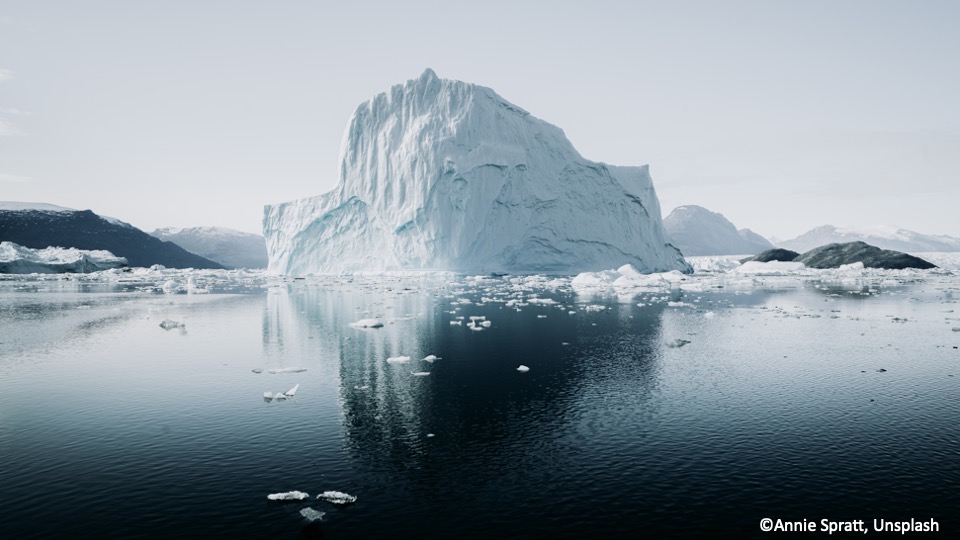Arctic Amplification
4 May 2023
What is Arctic Amplification ?
Arctic amplification is a climate system response to increasing atmospheric greenhouse gas concentrations. It is the phenomenon that the increase of the Arctic near-surface air temperature exceeds the global mean warming. The amplification of the annual warming in the Arctic, compared to the global mean, is by a factor of three to four. Various amplifying mechanisms in the climate system are responsible for this, such as feedbacks associated with retreating sea ice and snow cover (ice albedo feedback), changes in atmospheric temperature profile (lapse rate feedback), clouds (cloud albedo and emissivity feedbacks) and water vapor (feedback via change in atmospheric opacity), and also changes in atmospheric and ocean circulation and related heat and moisture transports into the Arctic. The understanding of the relative importance of these individual processes and their interplay for Arctic amplification is an ongoing research topic.
How could Arctic Amplification impact the global climate system ?
Globally, an amplified warming in the Arctic leads to a reduced temperature gradient between the Arctic and midlatitudes. Dynamically, this affects the large-scale atmospheric wind patterns. It can lead to weakening zonal winds and thus increased probability of slower and more amplified Rossby waves (incl. stronger meandering of the polar jet stream). This impacts the midlatitude weather variability, because as a consequence it can increase the probability of blocking patterns and thus of extreme weather events (such as colder winters and summer heat waves) in the midlatitudes, for example in North America, Europe and Northern Siberia. However, the strenght of this impact and the possible underlying tropospheric and stratospheric dynamical pathways are still poorly understood and part of active research.
How could Arctic Amplification impact Arctic communities ? Society ? The surrounding environment ?
Arctic amplification has wide and strong impacts on the ecosystems and socio-economic activities. This includes the implications of sea ice retreat in the shelf regions, which opens the Northern sea routes for Arctic commercial shipping, offer increased fishery activities and natural resource extractions. The impacts of warming and change of hydrological cycle are manifold and include for example changes in the length of the summer growing season, timing and dynamics of spring river runoff, forest fires, thawing of permafrost, and many more. Arctic communties are directly affected by Arctic amplification. This is not only by the above listed socio-economic activities, but also by the environmental changes, which, for example change hunting and herding activities, and also village infrastructure (damage by coastal erosion).
How will PolarRES look into the effects of this phenomena ?
The improved understanding of key processes in the atmosphere, sea ice and ocean, and involved interactions that play a major role in the coupled Arctic climate system and associated Arctic Amplification, is the central research objective in PolarRES WP4. In particular we will study processes related with clouds, atmospheric boundary layer, snow and sea ice, and Arctic (Siberian) shelf mixing processes. The focus is on the processes’ impact on the surface energy budget and their role in atmosphere-ocean interactions. This particularly involves an improved understanding of the associated exchange of energy, momentum, mass, and carbon between the atmosphere, ocean, and sea ice in the Arctic Ocean.
Furthermore, PolarRES investigates in WP2 the effects that better resolved Arctic atmospheric processes in the Arctic can have on the simulation of Arctic-midlatitude teleconnections, feedbacks and regional impacts of climate change. In particular we aim to better understand the underlying dynamical mechanisms and pathways which link the Arctic and the lower latitudes.
Finally, PolarRES will provide new scientific understanding of the Arctic amplification by the novel storyline approach for global climate projections (WP1) and zoomed-in high-resolution regional model downscaling of the Arctic climate change (WP3). This will allow a better estimates of Arctic climate change and its impacts, and advanced investigation of Arctic-midlatitude linkages.

Should you have any questions regarding this, please let us know !
Email us at jessica.santos@arctik.eu and hannah.hayes@arctik.eu
